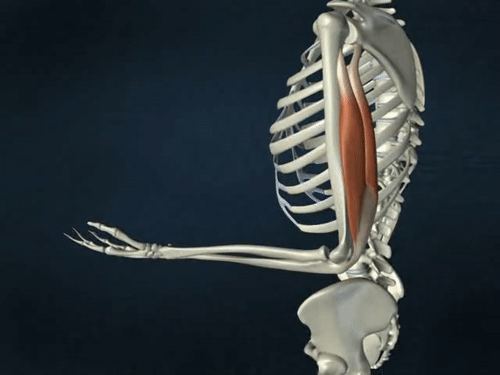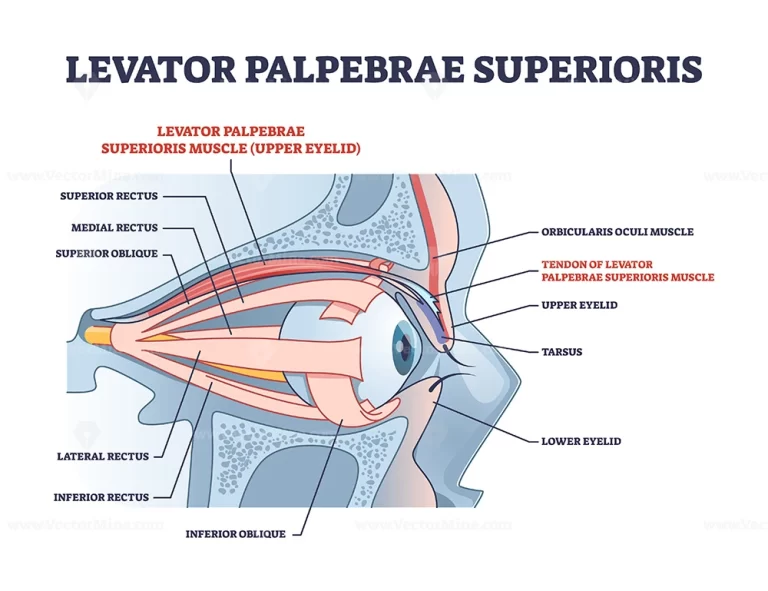Hypnotherapy
What is a Hypnotherapy?
Hypnotherapy is a form of therapy that uses hypnosis as a tool to facilitate change in a person’s thoughts, feelings, and behaviors. Hypnosis is a state of focused attention and heightened suggestibility that allows individuals to access their subconscious mind, where many of our beliefs, emotions, and habits are stored.
During a hypnotherapy session, a trained hypnotherapist guides the client into a relaxed state of hypnosis and uses techniques to help the client make positive changes in their lives. These changes can include overcoming fears and phobias, reducing anxiety and stress, managing chronic pain, improving sleep, and breaking unwanted habits like smoking or overeating.
Hypnotherapy is a safe and effective treatment option for many people, and it can be used in conjunction with other forms of therapy or medical treatment. It is important to note that hypnosis is not a form of mind control, and clients are always in control of their thoughts and actions during a hypnotherapy session.
Definition of Hypnotherapy
Hypnotherapy creates a hypnotic state in the patient to elevate motivation or modify behavior patterns: Consult with the patient to determine the character of the problem. Prepares the patient to join a hypnotic state by describing how hypnosis works and what the patient would experience. Tests should be subject to define the degree of physical and emotional suggestibility. Generates hypnotic conditions in a patient, using individualized procedures and strategies of hypnosis based on the performance of trial outcomes and examination of the patient’s problem. Must train patients in self-hypnosis conditioning.
before starting hypnotherapy it is essential to know about hypnosis and its effect the hypnosis
Hypnosis
it is the process of contact with the unconscious mind. The unconscious mind results in a senseless response to ideas giving grant individuals to relax deeply. In fact, a natural state of mind that is related to hypnosis without realizing hypnosis, like in daydreaming. the therapist tries to handle the patient’s unconscious mind; particularly thinking of positive thoughts should be specified, replacing one-time judgemental cognitions with useful ones. Cognitive psychology deals with the meaning of circumstances, the underlying methods, and the manners of structuring and interpreting experiences. It surrounds impact, perception, and behavior.
It is declared that during magic, the behavior must be altered, stimulating patients to re-associate and reorganize inner psychological complexness. Perceptions should be altered and negative cognitions should be replaced by positive ideas. The unconscious mind must be reprogrammed, give granting the individual in the conscious condition the freedom to act and take out new positive subjective thinks. In fact, breakthroughs correlating to the neurobiology of feeling and the endocrinology of tension should be delivering new data for conceptual education and behavior as one of the significant psychological bases of therapeutic hypnosis.
It has been proposed that hypnosis is based on the impact of the theory of human emotion and that using specific languages like hypnosis and cognitive therapy should be based on equal ideas of affect. In fact, it is advised that severe symptoms of dysfunctional cognitions and feelings should come and be treated in cognitive therapy via a series of interactions equal to hypnosis, as ideas earlier sealed to negative affect were processed completely.
The literature also indicates that cognitions sealed to undesirable emotions should become disturbed and resistant to alter until hypnosis varies the affective perceptions of someone. It is claimed that psychotherapeutic interventions should result in considerable changes in the brain’s affective, behavioral, and cognitive regions. Hypnosis itself is not a treatment; however, it is advised that when hypnosis is utilized as an adjunct to therapy the hypnotic connection improves the usefulness of the treatment effects.
The Hypnotherapy method is a set of approaches created to vary the state of consciousness. the perspective highlights the ability of someone to access their own aids to improve the quality of their energies, reanalyze their memory, and prevent the effect of fear and physiological hyperarousal. It must be advised that during this state the memory and meaning of negative experiences should be changed via emotional processing, as well as lowering the bodily symptoms of anxiety associated with the dislocation-related stress
The Techniques and Protocols of Hypnosis
The following is a short overview of the procedures and protocols of hypnotism with verification of whether these statements taken from the writings are effective or not:
Hypnosis improves the effectiveness of treatment and forms the belief in self-efficacy. Proof from the writings notifies that perceived self-efficacy not only develops a sense of hope but also concerns the therapy, and that expectation of self-efficacy is significant to all states of therapeutic change.
Hypnosis adds power to treatment and reduced the treatment time. When patients should completely relax, positive personal experiences happen to replace negative cognitions, which seem to take great comfort and relief. quick changes must be attributed to the quick and deep behavioral, emotional, cognitive, and physiological variations carried out by hypnosis.
Hypnosis breaks resistance when avoiding hypnotic recommendations should be involved in therapy. Oppositional information given by the therapist is utilized to receive requests. An example of this would be to try to open the eyes the more people remain tightly closed the mouth. The word ‘attempt’ predisposes to failure, so it should be utilized in therapy whenever the opposite should be needed.
Hypnosis promotes rapid transference, which supports the advice given in therapy. During hypnosis, there is more significant access to stories, memories, and emotions, permitting the rapid happening of full-blown transference expressions. During the hypnotic state, the essential faculty of the mind should avoid, stimulating the processing of ideas in the unconscious mind, which should be then moved to the conscious mind in the waking state.
Hypnosis generates deep relaxation, and in this state, advice should be made that is effective for the removal of fear. A trance country is a unique psychological state in which patients must reassociate and reorganize their internal psychological complexities. It is discussed that during therapy an inner resynthesis of the patient’s behavior is gained by the patient, and further discussed that advice post-hypnotic requests during therapy highlight the natural tendency of the mind to recover itself.
Hypnosis strengthens the ego by improving self-confidence and self-worth. Ego strengthening is thought when positive hints should be repeated adequately and thoughts become implanted in the unconscious mind to be performed upon in the conscious state.
Hypnosis promotes divergent thought, maximizing awareness, attentional focus, and attention. hypnosis reduces distraction and interference from other sources and stimuli raising the possibility of learning choices. the breaking of the limits of conscious moods releases the unconscious opportunity for problem-solving.
Hypnosis permits attention of the non-dominant hemisphere in the brain. It delivers direct entry into the cognitive processing of the right cerebral hemisphere in a right-handed person, which accesses and schedules emotional and experiential data. hypnosis should be worked to execute the reshaping of cognitive and emotional approaches that should be impacted by the non-dominant cerebral hemisphere layer of the brain. Many of the sensory-perceptual speeches of the mind like visual, auditory, and kinaesthetic information should write in code language like maps over the cerebral cortex of the brain.
Hypnosis promotes imagery conditioning. In this state, imagery and cognitive restructuring should heighten. The use of the word ‘hypnosis’ and the application of different hypnotic processes seem to increase the power of the hint. Proof from the writings indicates that when the patient will be hypnotized, the power of imagination should be raised and that perhaps the occurrence of the hypnosis, imagery, and affect should all be mediated by the same right cerebral hemisphere.
Hypnosis utilizes post-hypnotic recommendations and will be an essential part of therapy and should be utilized to shape expected upcoming behavior; it should be powerful in changing problem behaviors, dysfunctional cognitions, and negative emotions. It is declared that post-hypnotic indications function as positive views for desired future behavior, and should be considered an essential part of the therapeutic process, allowing the patient to act upon the recommendations in future experiences.
Hypnosis improves training in positive self-hypnosis, which supplies a strategy for balancing negative cognitions. It is discussed that negative thinking should lead to negative affect, personal ideas, deformed motivation, attention, and cognition. Positive procedures should be practiced during self-hypnosis, therefore reinforcing and strengthening hypnotherapy.
Hypnotic techniques are easily exported and must be smoothly incorporated with many conditions of therapy. When hypnotic procedures must be utilized as an adjunct to a precise form of therapy whether behavioral, cognitive or cognitive behavioral therapy, the effects should improve the treatment result.
The above techniques and protocols suggest that by assuming hypnosis as an adjunct to therapy handling the unconscious mind, the difference should be executed fast, and more deeply, and the hypnotherapy result will improve. Assuming this hypnotherapeutic approach, it obeys that the therapy results should be more effective than cognitive behavior therapy alone. A summary of the background of cognitive behavior therapy is now given together with the explanation for the integration of cognitive behavior therapy with hypnosis.
hypnotherapy is a collection of mind and body interference in which hypnotism must utilize to make a state of concentrating awareness and elevated suggestibility in the treatment of a medical or psychological disease or circumstance.
Types of Hypnotherapy
Traditional hypnotherapy
The form of hypnotherapy practiced by most people hypnotists particularly utilized the direct suggestion of symptom lessening, with some use of therapeutic relaxation and sometimes a version of alcohol, drugs, etc.
Cognitive/behavioral hypnotherapy
This therapy is used for psychological treatment that also uses on clinical hypnosis and cognitive behavioral hypnotherapy. The benefit of cognitive behavior therapy in association with hypnotherapy must result in greater treatment effectiveness. A meta-analysis showed a 70 percent greater improvement for patients experiencing an integrated treatment than those using cognitive behavioral therapy only.
hypnotism must be reasonably understood not as a certain state but as the outcome of normal psychological variables, like active imagination, expectation, proper attitudes, and inspiration. cognitive-behavioral to watch the nonstate idea of hypnotism, and analyzed its method of application to behavior therapy in the patient.
The rising application of cognitive and behavioral psychological approaches and ideas to the description of hypnosis surrounded the way for closer integration of hypnotherapy with different mental and behavioral therapies.
Many cognitive and behavioral therapies should themselves originally be influenced by older hypnotherapy methods, e.g., systematic desensitization the cardinal method of early behavior therapy, is initially named hypnotic desensitization and derived from the Medical Hypnosis
Cognitive therapy is a type of psychotherapy. Cognitive therapy is one therapeutic strategy within the larger group of cognitive behavioral therapies. Cognitive behavior therapy depends on the mind model, which says that ideas, feelings, and behavior that all should be connected and that someone should move toward overcoming problems and meeting their purposes by specifying and modifying unhelpful or incorrect thinking, inappropriate behavior, and uncomfortable emotional responses. This involves the individual working with the therapist to create skills for testing and changing ideas, identifying deformed thinking, relating to others in different ways for dislocation-related stress, and changing behaviors. A cognitive image must be developed by cognitive behavior therapy as a friend to know someone’s inner reality, choose suitable interventions, and choose regions of distress.
Cognitive behavioral hypnotherapy is an advanced therapy that offers strong strategies to assist with a broad range of both emotional issues and physical conditions.
Designed to manage problems by changing the way of thinking and behaving cognitive behavioral hypnotherapy will prepare to deal with the problems in a positive track by combining hypnosis with traditional cognitive behavioral therapy.
Cognitive behavioral therapy is a short-term therapy approach that would satisfy the person for discovering new pathways to act by adjusting their thinking habits. Sessions concentrate on researching new modes to close everyday challenges and behavior patterns that appear from day to day. Cognitive behavior therapy is one type of therapy that can be considerably more effective in treating depression and anxiety related to dislocation, bipolar disorder, and various other mental health conditions.
cognitive behavior therapy naturally contains five to twenty-one sessions in one session, though some people might have more sessions. Cognitive behavior therapy must also carry out in the form of group sessions.
Cognitive behavior hypnotherapy is a state of psychotherapy that naturally concentrate on how ideas, perspective, and mindsets impact the feelings and behaviors of people.
Unuseful patterns of thinking and behavior should lead to psychological distress.
People should learn more beneficial routes of thinking and apply that behavior in Cognitive behavior therapy.
New habits will relieve symptoms of mental and physical conditions and grant people to perform in more beneficial ways.
Cognitive behavior therapy assists people with depression, panic disorder, and various other health conditions. There is also an addition to help relieve chronic pain.
in cognitive behavior therapy which a consultant and an individual or group meet regularly and take part in the session. Counselors normally hold meetings weekly to show the progression.
Cognitive behavior therapy focuses on present thoughts and perspectives and points out the requirement to identify, challenge, and change how a person views a situation. Changing distortions and perceptions
Cognitive behavior therapy’s purpose is to convert the modes of thought and behaving that stand in the route that shows how a person should want to live their life regarding this cognitive behavior therapy. Cognitive behavior therapy involves analyzing negative perceptions or distortions that should be affecting behavior.
A twisted view should make a person more susceptible to an unhelpful mindset, direct jumping to conclusions, falsely visiting situations, seeing things as either good or bad, with nothing present in that
If people learn fearful or not useful patterns of thinking, they should start to believe in that way automatically. Cognitive behavior therapy focuses on challenging these automatic fearful and not useful ideas and corresponding those thoughts with reality.
When a person reaches to view a certain situation in a more helpful manner, their pain commonly reduces, and the person must take actions or create decisions that should be more possible to aid the situation in the long term
What should Cognitive behavior hypnotherapy do?
During a course of Cognitive behavior therapy, a person should learn to: following things develop a way of awareness of automatic, unuseful thoughts, and challenges that might be unuseful, select between facts and unuseful ideas
develop a more valuable way of thinking and seeing situations
- The activities involved: The actual course of a person with Cognitive behavior therapy changes, depending on their signs and possibilities.
- gets periodic feedback
- role to doing activities of routine
- gradually increased exposure to the things which they were fear in the past because of dislocation
- keeps a cognitive behavioral diary to write down progression notes
- daily practices achieve mastery for movement to develop positive behavioral change and growth
Cognitive hypnotherapy restructuring (methods)
Cognitive restructuring involves four steps:
- selection of problematic cognitions termed as automatic thoughts which should dysfunctional or negative views of the self, world, or future based upon already existing ideas regarding one’s self, the world, or the future
- assessment of the cognitive distortions in the automatic thoughts
- Rational discussion of automatic thoughts with the Socratic process
- Development of rational protection of the automatic thoughts
There are six types of automatic thoughts:
- Self-evaluated thoughts
- Thoughts about the evaluations of others
- unnecessary thoughts regarding the other person with whom they are interacting
- Thoughts regarding coping strategies and executing behavioral plans
- Thoughts of ignorance
- Any other thoughts that are not categorized
Other major techniques for cognitive behavior hypnotherapy involve:
- Activity monitoring and activity scheduling
- Behavioral experiments
- Catching, checking, and changing thoughts
- Collective empiricism: therapist and patient become researchers by inspecting the proof to support or decline the patient’s cognitions. Practical evidence should be utilized to choose whether certain cognitions have any useful aim.
- Downward arrow method
- Exposure and response prevention
- Cost-benefit analysis
- acting “as if”
- Guided discovery: therapist explains behavioral problems and wrong thoughts by creating new experiences that tend to the obtainment of new skills and viewpoints. Via both cognitive and behavioral approaches, the patient finds more adaptive pathways of thought and managing with environmental stressors by updating cognitive processing.
- Mastery and pleasure approach
- Problem-solving
The Socratic question interests the creation of a sequence of questions to a) describe and define problems, b) help in the identification of ideas, images, and beliefs, c) examine the senses of events for the patient, and d) evaluate the outcomes of maintaining maladaptive thoughts and behaviors.
The mastery and pleasure technique is a form of cognitive behavioral therapy for the treatment of depression. The technique is helpful when patients will active, but will have no satisfaction. The patients should rate on a 5-point scale or a 10-point scale how much satisfaction they have and how successful they will be when they do something. The patients record this hourly.
The patients should learn to remember partial successes and small degrees of satisfaction because depressive patients seem to have a mental distortion of all-or-nothing thought.
The patients should also learn that Mastery and Pleasure methods are independent. By the fusion of rating mastery and satisfaction of the ideological ideas like Life should be all fun or The only something worth spending time on the work to achieve the things which must be challenged.
the patients require reinforcers to feel good. The opinion is that patients should get reinforcers from activities, but want to wait for the patient’s mood to lighten before committing to activities. so perform activities like a behavioral investigation. The persons would elevate slightly motions with more high ratings of mastery and pleasure procedure and watch for new activities
Curative hypnotherapy
The theory of Mental Illness declares that people suffering from depression, or certain other kinds of neuroses, are already living in a trance a mental state in which the person does not notice what is going on surrounding his/her. He/she declares that magic means the hypnotherapist should not require to generate a trance, but rather create his/her mind regarding understanding curative hypnotherapy and conducting his/her out of it.
Mindful hypnotherapy
Mindful hypnotherapy is a therapy that integrates mindfulness and hypnotherapy. a valuable option for treating anxiety and stress reduction and creative mind-body therapy. The mindful therapy showed a decrease in stress and an improvement in mindfulness.
Relationship to scientific medicine
Hypnotherapy practitioners sometimes attract the concentration of mainstream medicine. Tries to invest in academic control should be discouraged by the complexity of patient suggestibility, which would social and cultural aspects, involving the importance of the practitioner. Results executed at one time and center of study should not be reliably transmitted to future generations.
preparations for hypnotherapy
there is no requirement for any special preparation for hypnotherapy. It’s a good thought to wear comfortable clothing to allow for make the person to relax. Make sure that the person is satisfactorily slept on the treatment table. it is the way that the person is less probable to fall down sleeping during the treatment time, as it is meant to be comforting.
Select a healthcare provider who is authorized to conduct hypnosis. Get a suggestion from someone whom the person trusts. Learn about any physician that the person considering. Ask questions like
- should he/she have specialized training in hypnosis?
- should they approve in their specialty in this state?
- How much training have they had in hypnosis? From what clinics?
- How long have they done hypnosis?
- how much are their fees? should insurance cover hypnotherapy?
What the person should expect from Hypnotherapy?
Before the person begins the treatment, the healthcare provider describes the process of hypnosis and reviews the treatment plans. Then the provider naturally starts by speaking in a soft, delicate tone, expressing pictures that form a sense of relaxation, safety, and well-being.
When the person is relaxed and calm, the health care provider advises paths for his/her to gain their goals. That might contain, ways to relieve pain or lower wishes to smoke. The provider also might help him/her to imagine flashy, meaningful mental pictures of themselves executing their plans.
When the session should complete, the person might be capable to obtain themselves out of hypnosis on their own. Or the health care provider might support the person slowly and comfortably improve her/his attention.
opposing to what he/she might notice in movies or during a hypnotist scene show, people should not lose power over their manners during hypnosis. The person naturally remains aware during a session and remembers what happens.
Over time, the person might be able to rehearse self-hypnosis. During the time of self-hypnosis, the person should arrive a state of relaxation and comfort without a healthcare provider’s guidance. This talent should be helpful in many situations, like before surgery or other medical strategies.
Stages for Hypnotherapy
- There are four stages of hypnosis which contain induction, deepener, suggestions, and emergence.
Induction
During the induction stage, the person starts to relax, focus on concentration and ignore distractions. the hypnotherapist would guide the person via the induction stage with specific approaches like controlled breathing in beyond a count of seven, then breathing out beyond a count of eleven, or progressive muscle relaxation tensing muscles as inspiration and relaxing muscles as expiration, then repeating this movement in a specific order of muscle groups all over the body or focusing on visual pictures.
Deepener
The deepener stage extends with the induction stage, taking relaxation and concentration to a deeper level. deepener steps frequently contain counting down or utilizing equal descending imagery like walking down stairs or slowly sinking down deeper and deeper into a comfortable bed. These first two stages should goal at relieving the openness to suggestions.
Suggestions
suggestions are the stage for real modification in experience, behavior, or perception. the hypnotherapist should utilize imagery and carefully determine language. The suggestions stage should normally symptom focused means to resolve a symptom or exploratory means to analyze the experiences attached to the rise of symptoms. recommended modifications might be in perception, sensation, emotion, memory, thought, or behavior.
Emergence
During the emergence stage, the person comes out of hypnosis. the hypnotist might utilize a reverse strategy for the deepeners method, like giving the person the suggestions like stair climbing or counting up.
Results
Hypnosis should be effective in helping people relieve pain, stress, and anxiety. Keep in mind though that health care providers commonly advised other treatments, like cognitive behavioral hypnotherapy, for those people whose conditions before or along with hypnosis. Hypnosis might be efficacious as a region of a larger treatment strategy for diffusing the smoking habit or losing weight.
Hypnosis shouldn’t be right for everyone. Not all people should be capable to enter a state of hypnosis fully enough for hypnosis to work well. normally, the more rapidly and easily the person arrives at a state of relaxation and peace during a period of treatment this is the thing that more likely with hypnosis people would achieve the benefit
Uses of Hypnotherapy
Clinicians select hypnotherapy to manage a broad range of cases; people prefer to keep hypnotherapy as part of the treatment for many other reasons:
Ignoring typical problems like concert anxiety, highway irritation, weight, smoking, drinking, unsafe sex, etc., these all people aiming for hypnotherapy nowadays because of suffering defined, unclear feelings that: (a) their health is far away from optimal health (b) they stress regard past/present/future events are extreme and exhausting (c) they should not comfortable with whom they should (d) they should not acting up to the level of their true possibility (e) their stamina is deficient at some effective but unidentified thing.
Menopause
There is proof of keeping the use of hypnotherapy in the treatment of menopause-related signs, involving hot moments The hypnotherapy for the nonhormonal management of menopause-connected vasomotor symptoms, giving it the highest level of proof
The use of hypnotherapy in treating the signs of irritable bowel syndrome is reinforced by research, involving randomized controlled trials. the patients launching gastrointestinal tract concentrated on hypnotherapy in normal clinical practice discovered that hypnotherapy is a useful intervention for stubborn irritable bowel syndrome. gastrointestinal tract directed hypnotherapy is guided in the treatment of irritable bowel syndrome
Childbirth
Hypnotherapy is frequently used in the birthing process and the post-natal period. but there is inadequate proof to decide if hypnotherapy relieves pain during childbirth and proof suggested that hypnotherapy is useful against post-natal depression. The use of hypnosis in childbirth directs in a reduction in the amount of pharmacological analgesia and oxytocin utilized, which lowers the duration of the first stage of labor. The self-hypnosis course improves the experience of childbirth in women and also lessens the level of anxiety. The positive experience of self-hypnosis gives a sense of peace, faith, and women empowerment in childbirth. Hypnobirthing has been utilized by someone like Catherine
Anxiety
The effectiveness of hypnotherapy has been compared to other therapeutic modalities that make use of imagery and relaxation techniques, such as cognitive-behavioral therapy. It has also been shown to be successful when utilized to lower anxiety in people with dental fear and phobias.
Post-traumatic stress disorder
Post Traumatic Stress Disorder (PTSD) and its symptoms should show to improve because of the performance of hypnotherapy, in both the long and short term. hypnotherapy is being more openly regarded as an effective intervention for people with post-traumatic stress disorder.
Depression
Hypnotherapy should show to be useful when utilized to treat long-term depressive symptoms. It should be shown to be equal to the effectiveness of cognitive-behavioral therapy, and when utilized with partners, effectiveness tends to improve
Other uses of hypnotherapy
Among above mentioned many other applications in other medical occupations for hypnotherapy. hypnotism should be utilized therapeutically, to treat the disease named hysteria.
Modern hypnotherapy is broadly accepted for the treatment of certain habit disorders, to control irrational fears, as well as for the treatment of conditions like insomnia and drug addiction. Hypnosis should also be utilized to improve recovery from non-psychological conditions like after surgical procedures in breast cancer care and even with gastro-intestinal problems
Risks for Hypnotherapy
Hypnosis done by a trained healthcare provider is a safe, complementary, and alternative medical treatment. Be aware, however, that hypnosis might not be secure for some people with extreme levels of mental illness.
Harmful responses to hypnosis should rare, but responses might contain:
- Dizziness
- Headache
- Nausea
- Drowsiness
- Anxiety or distress
- Sleep problems.
Be careful when someone indicates hypnotism as a technique to perform via stressful events from premature in life. That might initiate a strong emotional reaction.
FAQs
How do people describe the hypnotic experience?
People describe hypnosis experiences in different ways. the person might feel like he/she is “zoned in” or in a trance-like state so attention that he/she should capable of obstructing circulatory distractions. Has he/she ever been so concentrated on a TV show or so engaged in a good book that he/she shouldn’t listen to the family talking surround him/her or even the dog barking? This experience is somewhat similar to how he/she might feel while hypnotized. Many people told that they feel peaceful and relaxed despite raised concentration. Most expressed hypnotherapy as a satisfying experience.
should hypnosis utilize as the alone treatment?
Hypnosis should normally be utilized in conjunction with other medicines and treatments, as a component of a complete total treatment plan. The conclusion should be to utilize hypnotherapy in a clinical background as an alone treatment or as an add-on treatment in psychotherapy or standard medicine will make in consultation with a qualified professional trained in hypnotherapy’s usage and restrictions.
What’s the usual length of treatment with hypnotherapy?
There’s no specific length. Treatment alters depending on what and how intense the problem is. Hypnotherapy might carry multiple sessions.
should anyone be hypnotized?
each person alters their capability to be hypnotized. A person with fears or problems regarding hypnosis might interrupt the ability to be hypnotized.
Which type of person benefits the most from hypnosis?
The person who most probably achieves an advantage from hypnosis who’s positively inspired to overpower a problem. Like any other treatment, hypnosis might be beneficial for specific conditions or in certain people.
should hypnotherapy be unsuitable for individuals in certain situations?
Hypnotherapy must not be an appropriate treatment for individuals with severe mental health problems, like psychotic symptoms, concerning false perceptions of objects and events and abnormality in the affected person’s contents of thought. hypnotherapy might also be unsuitable for someone who uses drugs or alcohol. The use of hypnosis for memory recovery is largely unsupported. Caution is also informed concerning its use in handling stressful circumstances from earlier life. The use of hypnosis in stressful situations might create wrong memories, specifically if unintentional tips should be given, and generate more pain and anxiety.
should hypnotherapy be dangerous?
Hypnotherapy is a safe strategy when done by a trained therapist. Hypnotherapy shouldn’t mind control or brainwashing. the therapist shouldn’t push the person to do something uncomfortable or something he/she shouldn’t like to do.
should self-hypnosis be possible?
it is likely to rehearse self-hypnosis with deep breathing techniques, imagery, progressive muscle relaxation, and mindfulness strategy that must work also with elements of hypnosis. self-hypnosis should be mainly helpful for preventing the side effects of chemotherapy or handling recurring or repeating health issues like headache pain.
When should hypnotherapy not be used?
hypnotherapy should not utilize if he/she has psychosis or a particular type of personality disorder, as it might make the condition worse. Check with a general practitioner first if he/she obtained a personality disorder.
How many sessions of hypnotherapy does the person require?
Phobias, like a fear of flying, normally need one to two sessions. Deep work nearby anxiety, relationships, money matters, or modifying lifestyle rituals like emotional eating would repeatedly need a minimum of three to six sessions.
What is the success rate of hypnotherapy?
the success rate of hypnotherapy is excessively high 93 percent success rate over fewer sessions rather than talking therapies







